Volunteering with baby turtles and where can I do it?
April 13, 2021
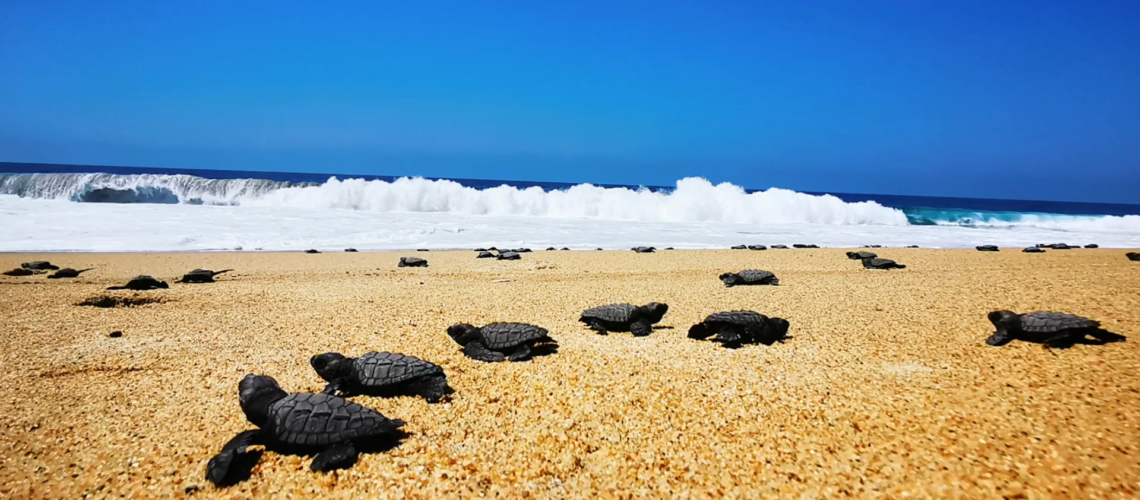
I’ve been here in Mexico for almost three weeks now and today I’m going to tell you about my first volunteer position with turtles. I have been a volunteer at Vivemar in Puerto Escondido for a fortnight now and the work is a lot of fun. I could say that I wake up every day feeling really happy, almost absolutely euphoric, because I can contribute to something so great. In the following, I’ll explain a little about what I’m doing here and also write a little about my impressions. Maybe you will come to the conclusion that this is an experience you would also like to have.
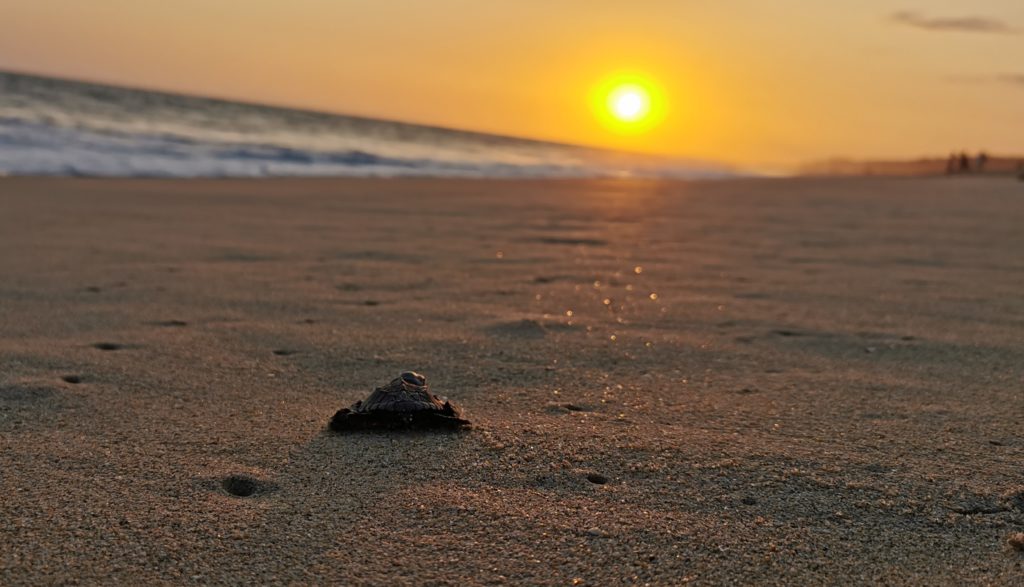
What is Vivemar?
Vivemar is a private organisation whose mission is to protect and preserve turtles, their species and their habitat. Environmental awareness is of paramount importance. Vivemar works closely with local schools to raise awareness about the environment, climate and the impact on our planet. This includes organising events such as joint beach clean-ups.
A little bit about sea turtles and why are they important?
There are 7 species of sea turtles worldwide. 4 of these species are found here in Puerto Escondido in Mexico. Sea turtles play a major role in the balance of the ecosystem. Since turtles feed on jellyfish, they regulate the population and thus have a direct influence on a neutral pH value in the ocean. This allows phytoplankton to produce organic material through photosynthesis. One of the waste products in the process is our oxygen. We humans get about 70% of our oxygen from the water and only about 30% comes from the flora on land.
Do you actually get to see a turtle?
Funnily enough, I have heard that as a volunteer with turtles you can also take place without an attractive, competent, living turtle. But this is definitely not the case here! I have released so many baby turtles here every day that I could no longer count how many there were after my first day. I think I am now somewhere in the high three or four figures. Apart from the incredible number of baby turtles, you also have the pleasure of meeting adult turtles during the night monitoring. And that almost every night! The main months are between August and April.
What does volunteering involve?
Ultimately, volunteering consists of three different work units, all of which you accompany. Let’s not go chronologically and start the day with monitoring the turtles at night. You can imagine that when turtles are ready to lay their eggs, they don’t want to do it on a busy beach. So when they are ready to lay their eggs, turtles prefer darkness. That’s why we patrol the beach from 9pm until sunrise at 7am. We patrol a 27km stretch of beach that we drive along in a small all-terrain vehicle. Here we try to discover by the footprints whether turtles are currently on land to lay eggs in a nest or whether they have already done so within a very short time. No time should be lost here, as the eggs should be transported to a safe fenced-in place/area (corral in Spanish) within the shortest possible time. Here the nests will be safe. If the eggs are not transported quickly to the secure area, they are more or less left to their current “nature”. This means that in addition to the animal dangers, there is also the danger of people stealing the turtles’ eggs and selling them. At popular spots, people are indeed waiting for the turtles to lay the eggs and then quickly take them. Therefore, it is immensely important to always be timely with the turtles. The current figures are such that without our help and safe removal, only 1 in 1000 turtle eggs survive (0.1%). With the relocation and the other actions I will describe in a moment, about 5-10 out of 100 (so do the math… 5-10%) can survive with our help. After a nest has been found and safely transported away, it is directly labelled with a sign, which we label with some important data to keep track of it (date of the find, estimated hatching date, number of eggs, names of the discoverers), because in such a corral there may well be around 100 nests.
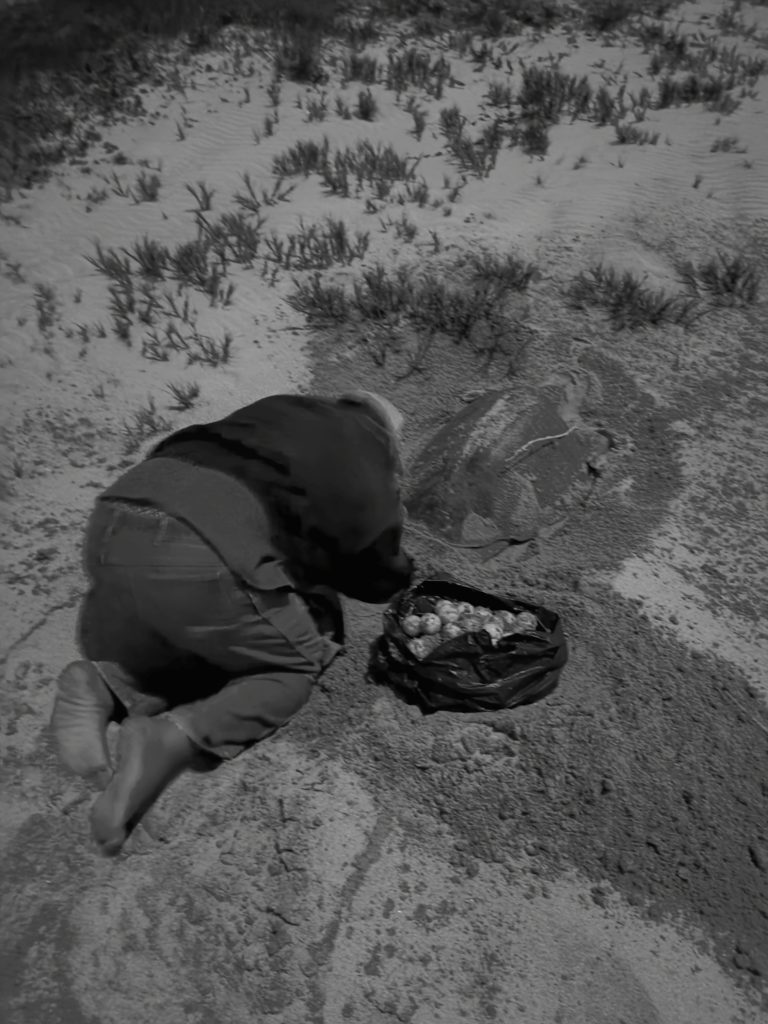
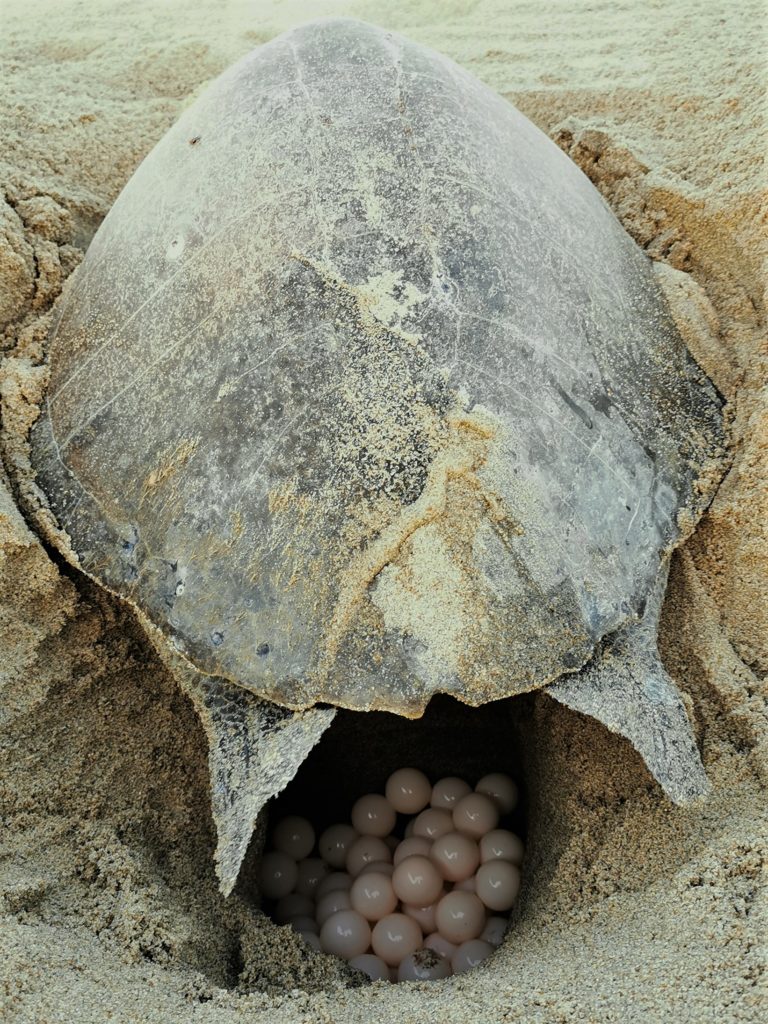
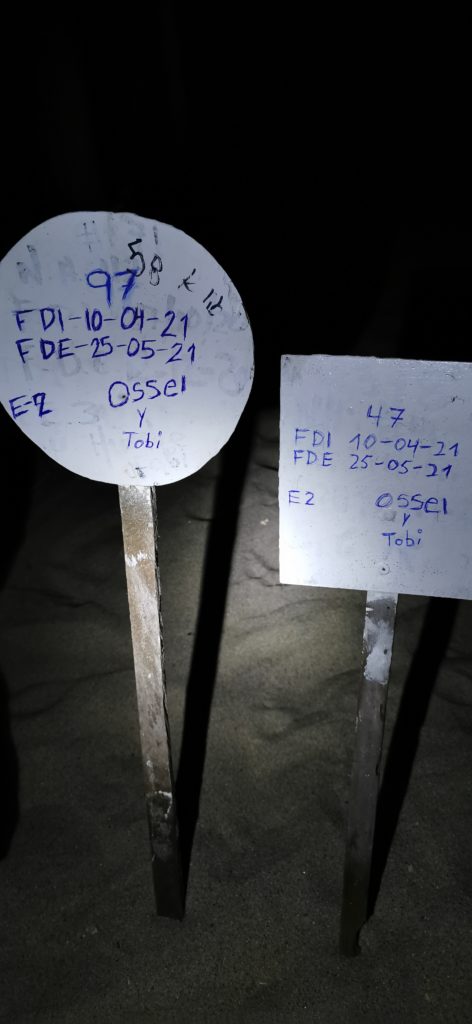
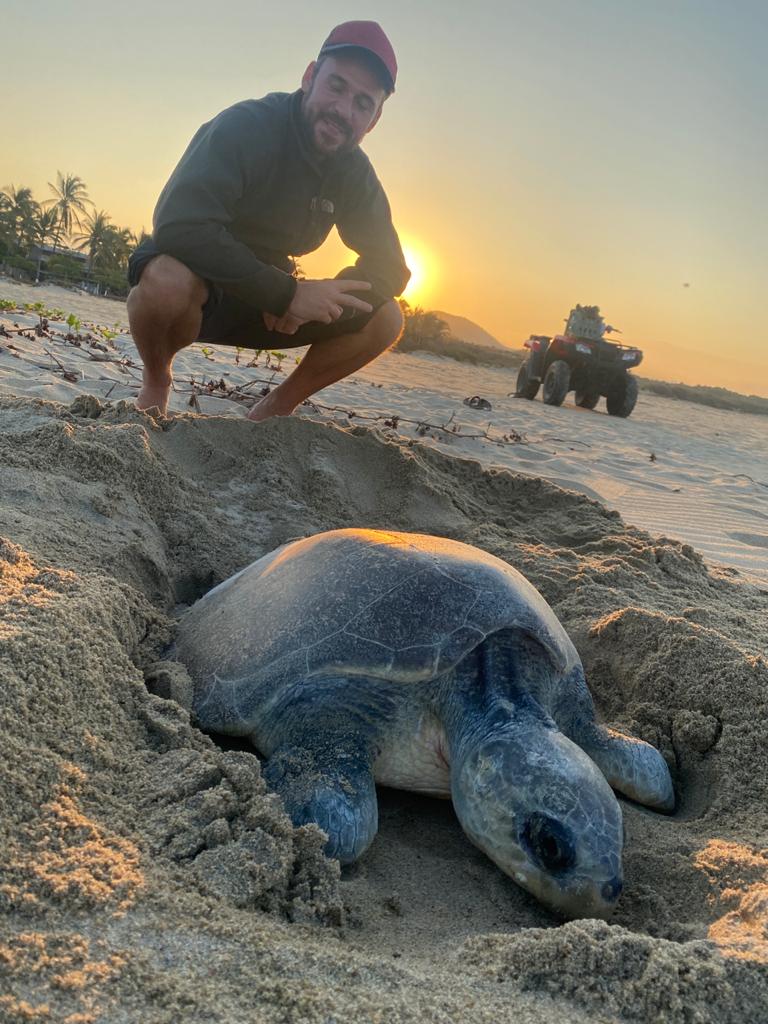
After the three-hour night monitoring shift, you can go back to sleep for a few hours before cleaning the nests every day from about 10-12. Here we check which nests have already released baby turtles or which nests should have been cleaned by now. The nests are then cleaned, i.e. all broken eggs are disposed of and all unhatched eggs are counted in order to have control over the nests and to record all data. The nice thing is that in this time you really free a lot of little baby turtles from the ground. In nature, the baby turtles that lie at the bottom of the nests would not actually make it to the top. By digging them out, these baby turtles can also make their way past the other eggs. At first, all the little baby turtles just lie around quite tired. But after a few minutes or hours, the whole thing changes quickly and they are already running around really lively and looking forward to being released. All the turtles that have been released from the nests are also released directly afterwards. Of course, we can’t miss a few videos here haha
Now we come to the highlight for most tourists and to an important programme point, the daily release of the turtles from 5 – 7 pm. Tourists can release the turtles here. But of course only after they have been told all the important information about the turtles and our work with them. For many tourists, it may just be a cute photo or video with the baby turtles, but it is important that the core message and the importance of turtles to the ecosystem is communicated to everyone and that the proceeds continue to ensure Vivemar’s sustainable work.
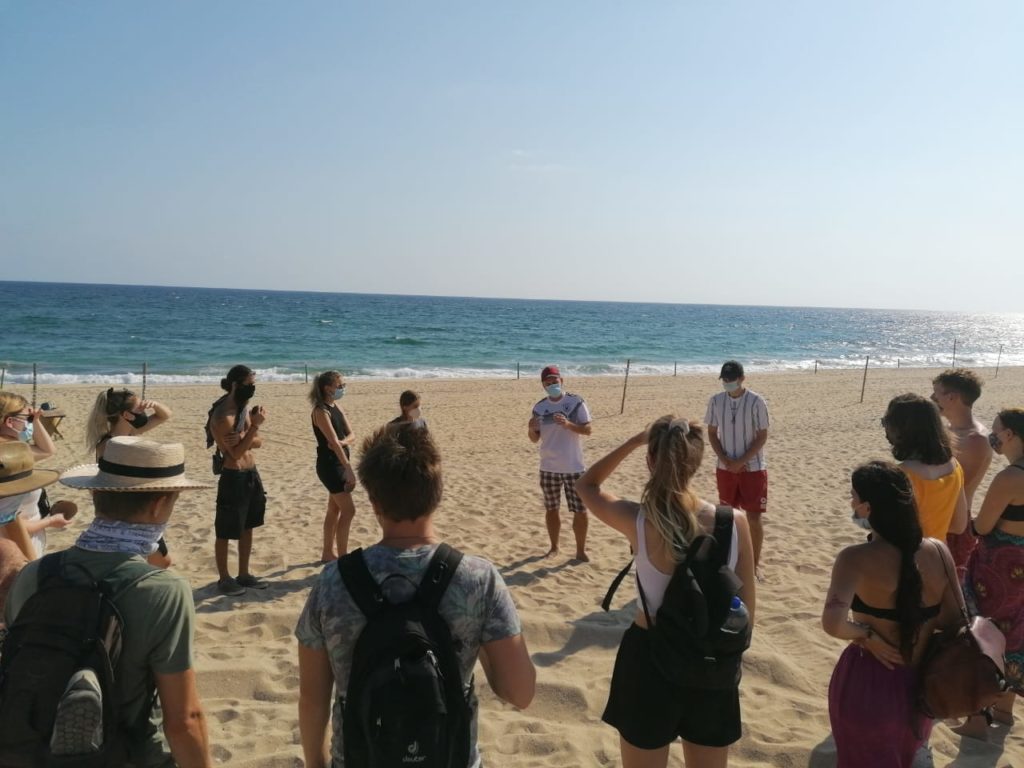
How can you get involved in volunteering yourself?
Usually, volunteer programmes with turtles are really popular. In my case, it was a really fun meeting. I’ve actually always wanted to learn more about these cute little creatures. Ok… baby turtles are small and cute. Adult ones are a bit bigger haha. But still… an adult turtle is of course a really cool animal! Anyway, I went to a turtle release and was there a bit early. This got me talking to one of the workers a bit and he told me that they need volunteers. In better times they had up to 8 volunteers and at the moment they just didn’t have any. Well, two days later I checked out of my hostel and started the volunteer programme. As a volunteer you pay a small contribution towards the costs of accommodation and petrol for the monitoring of 3000 MXN (about 125€) per week. This way you support the organisation a little bit in addition to your own motivation.
And how was the whole thing for me?
I really enjoyed it! The nightly monitoring and the resulting shortage of sleeping hours was sometimes a bit exhausting, but you could catch up on your sleep during the day. I enjoyed it so much that I decided to participate in the releases for another three weeks to tell the tourists more about the turtles and to point out their importance. All the staff is incredibly nice. Most of them speak only Spanish but there are also two who speak English, so even if you don’t know Spanish you can learn a lot and have a great time. I also shot so many videos that I’ll have to edit a little summary on my computer soon. What do you get out of it now? So thumbs up and I would be happy if I could motivate one or the other to volunteer with turtles.
How do I contact Vivemar?
+52 614 189 66 24
+52 954 544 13 30
Facebook: vivemar.com
Instagram: vivemar_bacocho
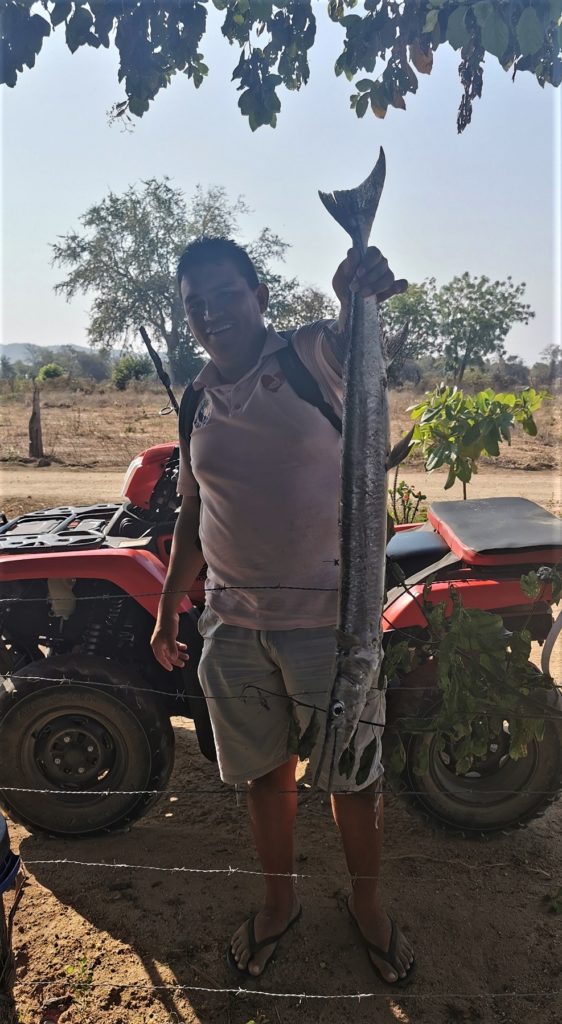
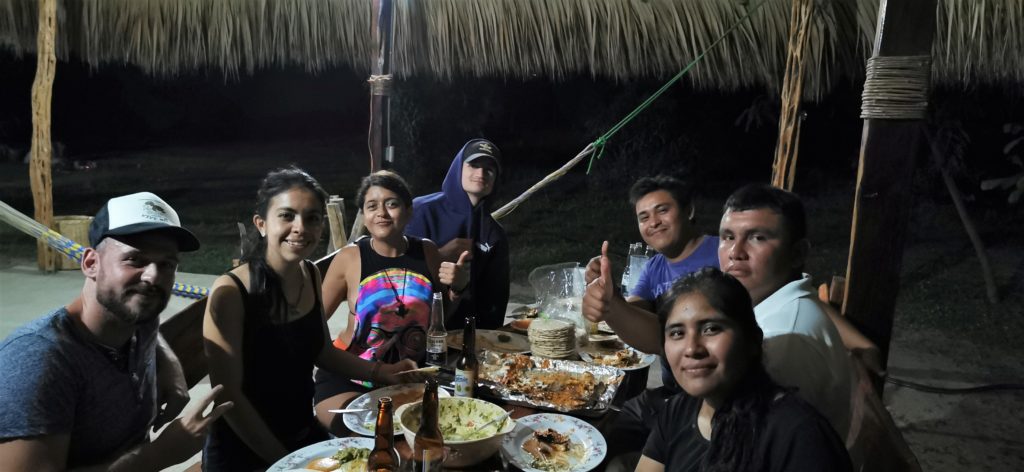
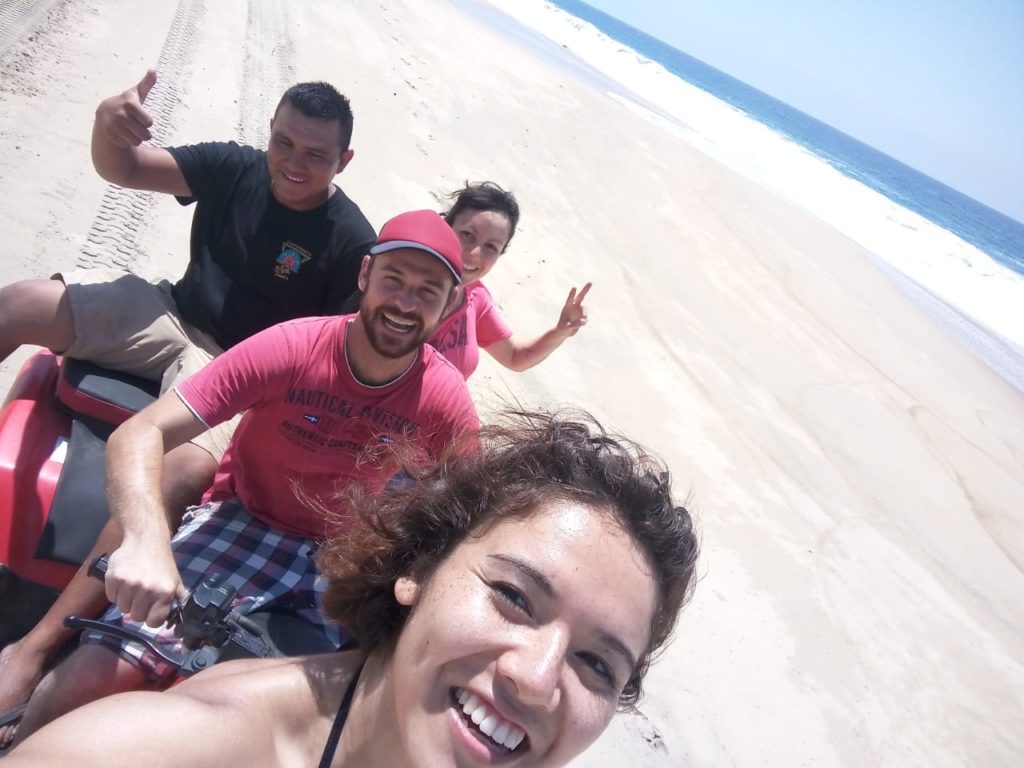








What a beautiful and magical experience!
[…] Volunteering with baby turtles and where can I do it? […]
Ich bin total begeistert Tobi :)! Tolle Sache mit der Schildgrötenhilfe und wieder einmal spannend die Details zu lesen!
Dat freut mich Franzi xD. Aber ist auch echt mega cool und macht viel Spaß!
¡Hey Tobi! Dicen que “recordar es volver a vivir” y al.leer tu post no pude evitar sonreír y revivir gratos momentos. Excelente información, has hablado con lujo de detalle sobre toda esta experiencia, con tu sello inigualable ✨ Un placer haber coincidido en el camino, ojalá que muy pronto nos volvamos a encontrar en este viaje llamado vida. ¡Muy buenas fotos y vídeos! 🐢 Abrazos desde tierras norteñas 🤠
Jajaja, gracias Anabel! La semana contigo y Aneth fue genial. gracias a ustedes he progresado mucho con mi español xD. Abrazos al norte